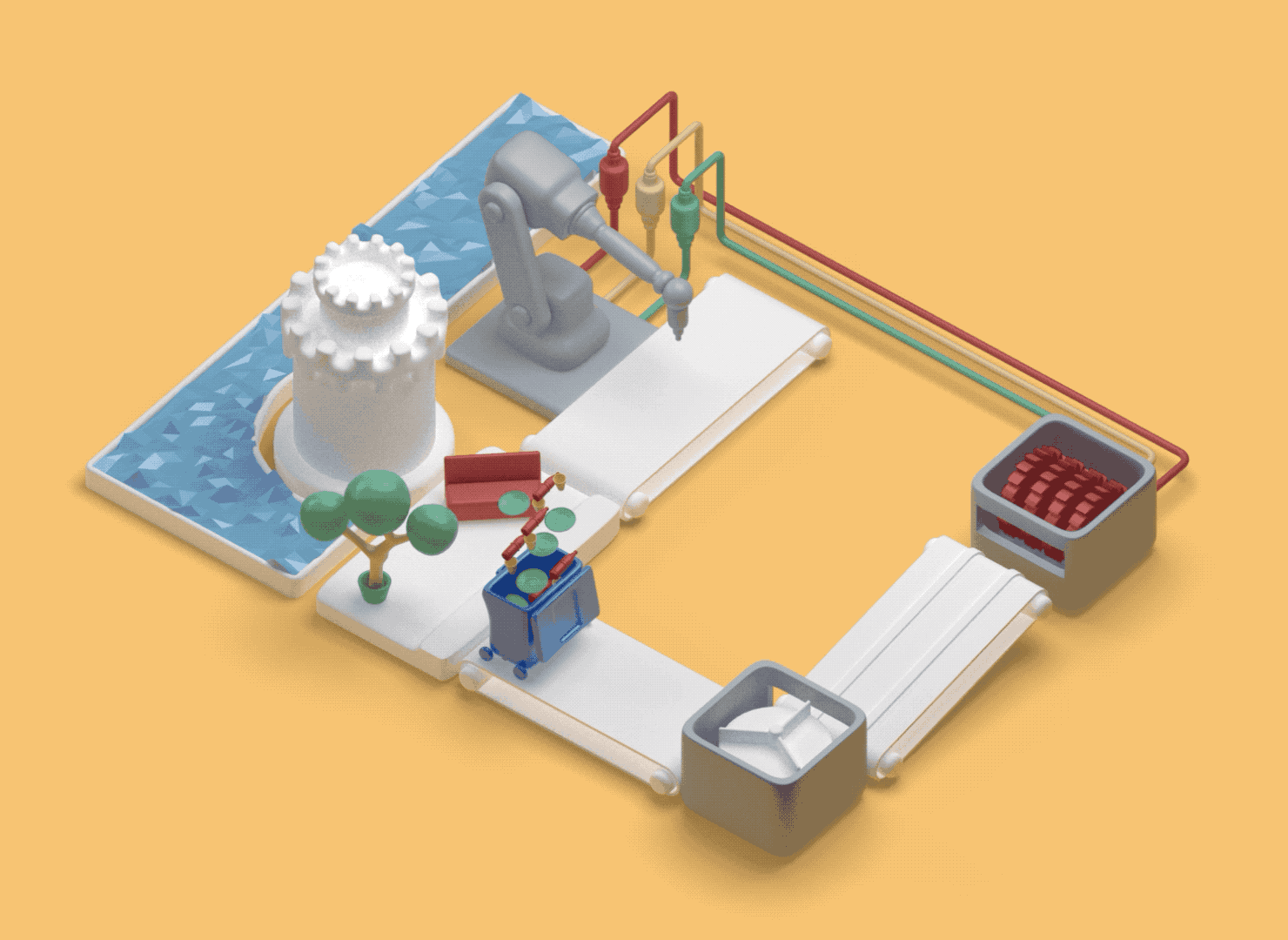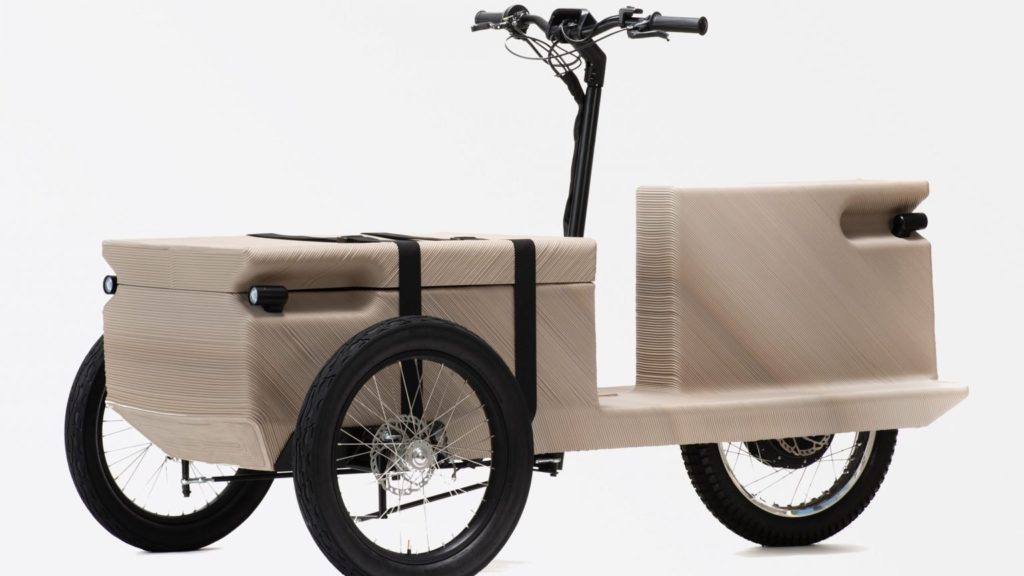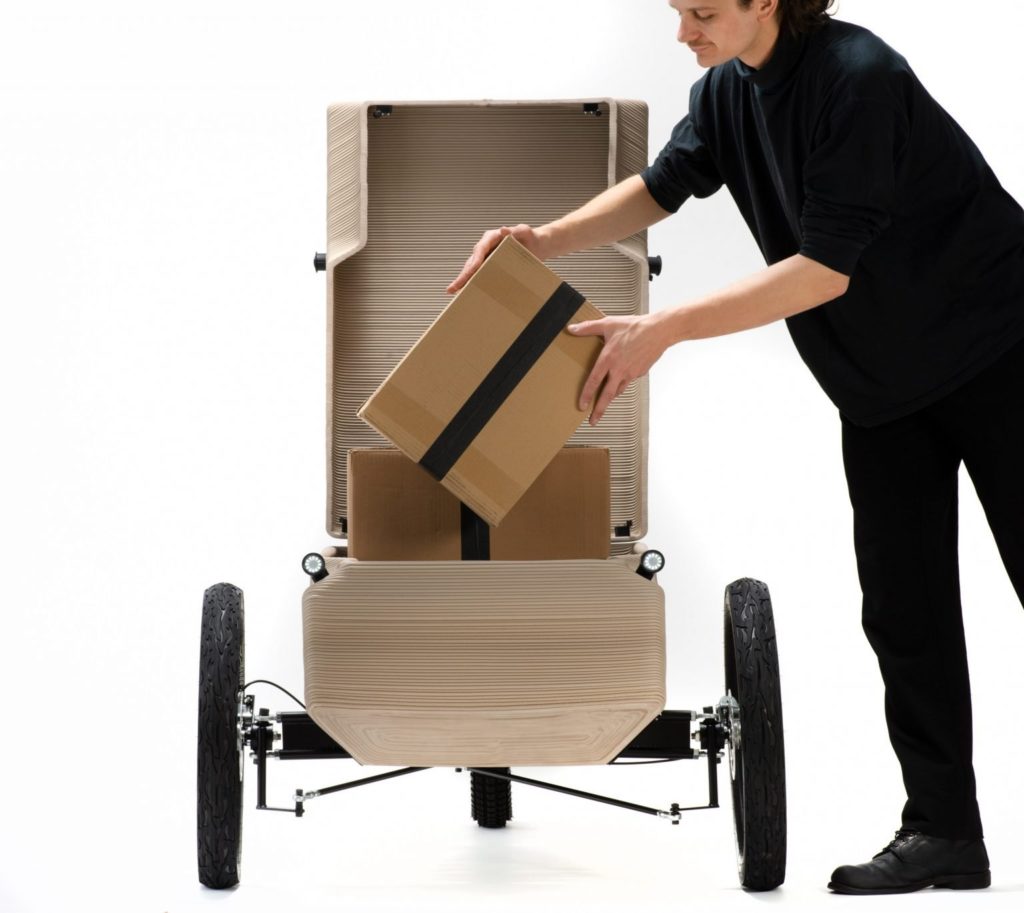An Austrian studio called EOOS has developed a vehicle that is not only meant to be environmentally friendly in terms of its energy source, but in its manufacturing materials as well. The Zero-Emissions Utility Vehicle (ZUV), is an electric tricycle 3D printed from recycled plastic.
For the Museum of Applied Arts’ Climate Care exhibition at the Vienna Biennale for Change, EOOS NEXT, the firm’s social design division, conceived of the ZUV. The vehicle features a rear-wheel hub electric motor and a body 3D printed from 70 kg of polypropylene salvaged from plastic packaging waste at supermarkets. 3D printing company The New Raw relied on its industrial robotic arm, outfitted with a plastic extruder, to manufacture the chassis.

The New Raw’s 3D printing robotic arm, installed at the Zero Waste Lab, in Thessaloniki as a part of Coca-Cola’s “Zero Waste Future” program in Greece. Image courtesy of The New Raw.
The ZUV concept was based on the idea that such a vehicle could be produced at a local fablab before a bike shop might attach off-the-shelf components, such as a motor, handlebars, brakes and wheels. Parts could be easily repaired and replaced from local bike kitchens and, once the body of the vehicle outlived its usefulness, it could be shredded and re-printed into a new bike.

The New Raw’s concept for using recycled materials as feedstock for 3D printed goods. Image courtesy of The New Raw.
“We wanted to design around local, affordable production,” said EOOS founder Harald Gründl in an interview with Dezeen. “Because of the high labour costs in Europe, almost every bike frame is produced in Asia. But we want a local ZUV production facility in every city around the world. What we envision is a circular economy of mobility. Service schemes with a designed ‘take back’ will be the future. And it’s way easier to close the loop if you do it locally rather than sending around ships full of waste as we do today, which is stupid.”
The use of an industrial robotic arm meant that The New Raw team did not need to produce support structures. The resulting 100-kg ZUV can hold up to two adults on its bench seat, with two children or cargo in the box up front.
Transportation represents 29 percent of domestic greenhouse gas emissions in the U.S. About 58 percent of this comes from light vehicles. According to “Public Transportation Reduces Greenhouse Gases and Conserves Energy,” private vehicles are the largest contributor to a household’s carbon footprint. While the most significant method for reducing these emissions would be to boost public transportation, electric vehicles are probably what appear more often in the public imagination and will likely play an important role in decarbonizing transportation.
A vehicle like the ZUV would be most ideal for local traffic in a city, where the majority of personal cars use their energy. Gründl explained to Dezeen that, even in the case of electric vehicles, there are resources and energy used up on driving such a heavy load.
“A car has maybe 800 kilogrammes of battery while a bicycle has eight and it does the job for many of the journeys that we want to make in a city,” Gründ said. “A lightweight vehicle has the benefit of having less effort in the production but it also uses less energy to transport people. The more sustainable you want to make a mobility system, the less weight it should have.”
The use of recycled material is another aspect of reducing the embedded emissions of the ZUV. As covered in our Climate Disrupted series, fossil fuel businesses are banking on plastics manufacturing as their way out of energy and into materials in an age of climate-related regulation. The ZUV, however, uses recycled material, which at least does away with emissions at the end of the polypropylene’s lifecycle.
“The reuse of post-consumer plastics is a big step towards net-zero carbon emissions. Every new vehicle will be, in a way, carbon neutral as long as the 3D printer is operated with energy coming from renewables,” Gründ said. “When supermarket plastic in Vienna goes to recycling, they’re just burning it,” he said. “And this creates another three tonnes of CO2 emissions, which we could avoid.”
Subscribe to Our Email Newsletter
Stay up-to-date on all the latest news from the 3D printing industry and receive information and offers from third party vendors.
You May Also Like
Air Force Awards Fortius Metals $1.25M to Qualify 3D Printing Wire for Hypersonic Applications
AFWERX, part of the US Air Force Research Laboratory (AFRL), awarded a Direct-to-Phase II Small Business Innovation Research (SBIR) contract worth $1.25 million to Colorado’s Fortius Metals, to accelerate qualification...
US Air Force Awards JuggerBot $4M for Large-format Hybrid 3D Printing
Large-format 3D printer manufacturer JuggerBot has received a $4 million grant to develop a large format 3D printer, courtesy of the Under Secretary of Defense, Research and Engineering Manufacturing Technology...
Where Have All AM’s Unicorns Gone?
In the rapidly evolving world of 3D printing, startups valued at over a billion dollars, known as unicorns, once seemed as fantastical as the mythical creatures themselves. While a few...
How My Childhood Fascination with Planes Led to Investing in 3D Printing
My fascination with aerospace started young, and I started studying planes–identifying them in the sky and learning everything I could about how they work. Fast forward to my first week...

































